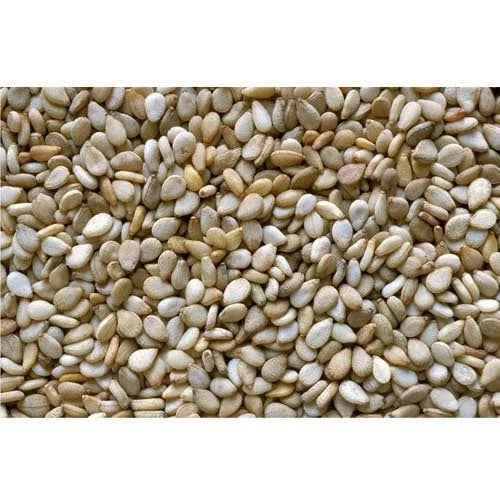
Diseases Management in Sesame
Share
Introduction
Sesame is a flowering plant native to sub-Saharan Africa and India, known for its seeds that are commonly used in cooking and oil production. Sesame seeds come in different colors, including white, black, and brown, and have a nutty flavor when roasted. They are rich in nutrients like protein, fiber, and healthy fats.

Common Diseases in Sesame
Phyllody
Symptoms:
The infected plant is characterized by transformation of all floral parts into green leafy structures followed by abundant vein clearing in different flower parts.
In severe infection, the entire inflorescence is replaced by short twisted leaves closely arranged on a stem with short internodes and abundant abnormal branches bend down.
Finally, plants look like witches broom.

Cause :
The phyllody is transmitted by the insect vector Orosius albicinctus [Leaf hopper].
Management :
Remove and destroy infected plants.
Intercropping of Sesame+Pigeonpea (6:1) is helpful for the management of phyllody.
Use of tolerant varieties:-TKG 21, RT-125 and RT-103.
To control vector....
Spraying of neem oil @10ml/l for vector (leaf hopper) control is helpful in managing the phyllody.

Stem and root rot / charcoal rot
Symptoms :
The disease symptom starts as yellowing of lower leaves, followed by drooping and defoliation.
The symptoms were produced at ground level, stem becomes black, which extends upward rupturing the stem and black dots appear on the infected stem.
The roots will become brittle.

Cause :
Fungal pathogen Macrophomina phaseolina
Management :
Field sanitation and Soil solarisation.
Use of tolerant varieties - RT-46, RT0125, MT- 75, TKG-22 and Nirmala.
Treat the seeds with Trichoderma viridae at 5g/kg.

Cercospora leaf spot
Symptoms :
It appears as small, angular brown leaf spot 5- 15 mm in diameter on both leaf surfaces.
Under favorable conditions, the disease spreads to leaf petiole, stem and capsules producing linear dark coloured lesions.
Extensive infection of foliage and capsule leads to defoliation and damage of sesame capsule and yield losses may range from 22 to 53%.

Cause :
Fungal pathogen Cercospora sesami
Management :
Field sanitation.
Early planting (immediately after onset of monsoon).
Intercropping of Sesame+Pearl millet (3:1) is helpful for controlling Cercospora disease.
Treat the seeds with Carbendazin or Thiram at 2g/kg.
Conclusion
Efective disease management in Sesame involves a combination of cultural, biological, and chemical strategies. By adopting integrated disease management practices, Farmers can ensure healthy and productive dragon plants, leading to high-quality Yield sesame.
FAQs:
What are the common diseases affecting Sesame?
Phyllody, cercospora leaf spot, charcoal rot are common diseases in sesame.
How can prevent phyllody disease of sesame?
By using tolerant varieties:-TKG 21, RT-125 and RT-103.
How can we manage cercospora leaf spot of sesame?
Intercropping of Sesame+Pearl millet (3:1) is helpful for controlling Cercospora disease.Treat the seeds with Carbendazin or Thiram at 2g/kg.
